| Umělec magazine 2005/1 >> I Use That Word Feminism Only Intimately and When it is Dark… | List of all editions. | ||||||||||||
|
|||||||||||||
I Use That Word Feminism Only Intimately and When it is Dark…Umělec magazine 2005/101.01.2005 Alice Červinková a Kateřina Šaldová | theory | en cs |
|||||||||||||
|
(from an investigative interview)
Recently, we presented two themes as part of a research project (1) aimed at women working in today’s art world: The relationship of women artists towards feminism, and the concept of women’s art. We worked on the presumption that the women’s art scene is created collectively by women. In examining these themes, we talked with the artists themselves—artists, curators, art historians, publishers, dramaturges and critics. We focused on women who present and thematize femininity or masculinity non-stereotypically and with an optic sensitivity to gender. Despite the academic sound of the word, “research,” we’d prefer to pursue a lay approach. We did not approach this as scientists who uncover hidden truths, purged from the prejudices and stereotypes; we wanted to offer a space to share, to clarify positions, to find a different view. For the following text we chose themes that we consider to be vital although they are the least simple. Feminism and art: Listen to the undertones of my work “I am no fighter, I don’t go demonstrating, don’t write manifestos.” Contemplating the nature of the Czech art scene in the context of feminism, we cannot omit the artist’s personal situation, approaches, and sense of gender that influence her engagement in art. Individual self-definition and gender subconscious form an important basis for engagement with art. Therefore we concentrated on this .From the beginning of our research project, we examined the relation of women artists towards feminism. In approaching this theme, we would like to define our concept of gender. We understand gender as an analytical category that transcends the categories of Woman and Man, categories that render both genders homogeneous, essential and schematic and; at the same time, these categories replicate themselves in perpetuity. The manner with which we speak of both sexes, in both academic discourse and everyday life (women are this way or that way and men do this or that), and the way we experienced them, ensures them to be the way they “are,” and thus ensures they seem to be such. In contrast to the categories of Woman and Man, the concept of gender has an analytical potential that produces definition, meaning and symbolism in a variety contexts. However, when we consider the term in its progressive form, there is an implication more of expressing than of describing characteristics. The word indicates the need to continuously fabricate our femininity and masculinity, and to do that in a complementary way. To say the same thing simply, we are co-authors and co-authoresses of our gender. How do women thematize gender in their work? How do they understand feminism in the context of their Czech surroundings? There are surely many eager souls who would love to read about what women’s art and feminism really is. We pose questions that have no simple answers. Nevertheless, we believe we have managed to articulate some instances that the women with whom we spoke have in common—and hold to be essential. We will attempt to address the personal relationships of women artists to their respective gender roles, how they perceive feminism and how they incorporate these feelings and opinions into their work. We hope to answer the question “Is my work feministic?” or “Am I a feminist?” and “what does it mean for me?” Even though the incorporation of homosexuality and feminism into the diagnosis of sexual inversion has been considered passé for over a century, the notion of feminism, or feminisms, continues to be accepted problematically. Our research has also confirmed our presupposition that fear of any -ism persists. It is a fear of any ideological or political perspective pertaining to any particular paradigm. Although we resisted homogenization of any kind, especially in studying women’s experiences, it is interesting to note that many women artists do understand the position of a woman and her experience in society as a problem and a personal question in life and work. The notion of being bound to ones gender role, which defines this situation, says a lot, but not as much as one would expect from such a strong definition. Since childhood we have often heard demonstrations of dissatisfaction with the established gender roles (I have always been such a tomboy), and these comments are often (and sometimes surprisingly) accompanied by a certain detachment from feminism, or even a fear of it. Considering that it is not a primary refusal to thematize the roles of women and man, but rather the other way around, we are interested in that feminism which we so fear in the Czech Republic – what it represents for us. Women artists often express a liking for a “sympathetic feminism that seeks full equal rights” or they refuse to accept the stereotype of “feminism in which women are the ‘poor’ ones and men ‘the exploiters.’” The women artists with whom we spoke see feminism as a label, an ideological sticker, something strange that exceeds their social experience, something they haven’t created themselves and that is unluckily being imported into their distinctive art. That kind of label puts their work in a place where many dare to go only when it is dark. But how can one neutralize these external limiting concepts, that, instead of enabling us to speak, tie us down? It seems that Czech women artists have their own solution. Instead of asserting feminism they embue their work with clear but implicit feminist meaning. Latent feminism, as one might define this approach, actively thematizes the gender roles that they perceive as limiting without referring to itself. One finds latent feminism addressed in many works by Czech women artists and in the interviews we had with many of them. The question remainwhether latent feminism is [or: external feminist influences are?] a positive influence on women artists as individuals and on the art of women in general. One thing is for sure: Instead of shouting “I am a feminist,” women artists consider it more important to define, deconstruct and reconstruct expressive levels of the word feminism, because that’s the only way they can supply their work with a clear undertone or leitmotif. Women’s Art: Challenge or Diagnosis? How is the search for the place for women’s art on the map of contemporary art linked with questions concerning the specificity of women’s art with a deconstructionist approach? It is not our intention to define that which makes women’s art specific to women; we don’t even think that is possible. Rather, we are interested in what is at play in creating a discourse about what is considered women’s art, its origin, form and meaning. Looking for an answer to this question wasn’t the initial intention of our project; it emerged over the course of our research, inspired by the interest of the women who participated. When the women artists spoke about their work—and about women’s art work in general—many stressed their use of intuition and empathy in their method and the influence of their personal experience on their work. At the same time they understood the labels “women’s work” and “women’s art“ as problematic. A second aspect they stressed—one that is in conflict with the first—is an open expression of difference, of strangeness, which can be ultimately diagnostic. Women’s creation. What is it about? Creation by women, for women; is that an engaged work of women, an engagement reflecting a position of women in society? Do men have a place within that? There can be harlequins standing next to openly explicit feminist works. It is no wonder that in such a wide range of expression, it is difficult to find a common thread. At one extreme is a simple consumerist woman dreaming about how to get her happiness, at the other, the “bearded” non-woman alias feminist. Here, the attribute female reveals an indifference towards art in itself, which in its meaning has no gender at all. Many women artists noted that when one speaks about the work of men nobody speaks of men’s art. In the Czech art scene of the 90s, young women artists cooperated with one another. They exhibited together—on their own initiative as well as with the encouragement of women curators. One of the main participants of these joint exhibitions says that the shows had no feminist connotation: “We didn’t ask whether we were feminists, but others were asking… that’s quite clear, because it was so unusual for women to run their own exhibition.” From interviews with the artists who participated in those exhibits, one feels more than a common need to communicate. This cooperation was founded on the close relationships among the women artists, that, “as it emerged so it disappeared.” One must ask whether this cooperation hadn’t resulted from the influence of that external feminist label, which the women artists didn’t acquire and which disappeared with the end of their cooperation. After that, women ceased to present exhibitions together. Recently a project entitled Five Women Five Questions tackled head-on the questions surrounding women’s art – and the art of women. In this project, the women artists decided not to exhibit their works, but instead asked their colleagues questions about women and art. The answers were presented in the gallery: “... such a display of doubts whether it is possible to specify something like that of women’s art and whether [women’s art] exists as a phenomena. Actually, it was an exhibition about doubts.” These five women brought to the project differing motifs and imaginations, joined by doubts regarding their sense of cooperation on the basis of sex. At the same time they were alarmed by the restricted status in the art world of women who exhibit together. The five women who created the questions answered them for themselves. Because they were behind the whole concept of the project and also the authors of the questions, they had an opportunity to think them through. As part of the project, five men were asked to present their views on these questions, and we see here a mixture of attempts to understand, simplify, render ironic, and support. The first two questions focus on doubts about collective exhibitions by women. Would you take part in an exhibition exclusively of women artists as a woman? In your opinion, what should a good women’s exhibition look like? The context of the exhibition (with whom, where, etc.) is not specified, but we find here a reflection of a certain “unnaturality” of the situation. One of the male artists hesitated, because he felt such an exhibition would demean him. Another would participate in a women’s show in the same way that he now participates in those of men; but he would wonder “why there are only women — why there are no men.” After attempts at defining a good women’s exhibition, we have learned more. Women should be able to know how to justify why they exhibit as a group, and why they exhibit alone The exhibition should contain some explanation of why it is purely a women’s exhibition. If the answer is obvious at all, it should be presented as normal. Also coming into play are attributes that a good women’s exhibition should have: The exhibition should be “funny and sexy,” says one woman. A man says: Others feel the show should not be affected. “The opening shouldn’t be hungry,” says another. The complex feelings of the artists are bound up with the question of whether there is “enough food and drink, and if so then she” can manage anything, from embroidery to engaged photography. The statements quite clearly say that women artists have a position of a “special kind” and they need to cooperate in a way that makes their connection meaningful. The question “What are /women best at creating in context of the current Czech art scene?” is trying to trace—in a positive sense—the differences between women’s and men’s art. Unless one refuses to accept out of hand that there are any differences, there is still something to learn about the art of women. The women artists speak about themes (joining with life, or that real one), about their way of working (multi-techniques and various hybrid approaches) or about the overall tone of the work (the art of women artists is often traumatic). One of the women artists distanced herself from the question. She labeled it as aggressively feminist and said it pressed her into an aggressive-defensive. She said that some women artists are best at complaining and whining that they are women. Artists usually grasped the questions in terms of technique; they tended to mention photography and new media. Photography was not only linked with the woman’s sensitive eye but also with their being patient and accumulative. All the only ones (2) We have focused on what feeds and creates the concepts in the art of women who thematize masculinity or femininity with a gender sensitive eye. For whatever reason or from whatever position, women artists ask about the specificity of women’s art. Their manner of calling for a discourse about women’s art and feminism in itself seems to be caught in a trap—one set by the modern concept of the world. By enticing us by offering a unique world in which categories of femininity and masculinity are clearly defined, this trap can result in an inadvertent substitution of experience and movement with determination and essence. In our opinion, it also appears in the question of how the need to delimit women’s work and position in the art scene contrasts with the emphasis on individuality of choice and processing of the theme. The women working in the art scene, whom we interviewed, do solve the question of specificity of women’s work. More than that, they accentuate the uniqueness of their own creation. Categorizing their art as feminist art or as women’s art raises their fear of being put into a homogenous group. Such labeling deprives the art of its own identity and inward inspiration and opens the way to the fears that their own voice will be muffled by a label they understand as primarily ideological, which is the case of the exhibition that was cancelled. What have we as women researchers found regarding this organization of meanings? Our initial disappointment that there “are not enough feminists” changed as we refined and delimited feminism. We sense slight and impertinent grins whenever we hear the word feminism in public. Whilst we realize the impossibility of importing Western thinking into the present Czech experience, we are neither abandoning the history of the women’s movement in the Czech Republic nor the analytical-critical thinking processes, that feminism enables. Maybe the constant dealing with the meaning of the word creates the real core of this paradigm in Czech conditions. We are not giving this basis up. We understand feminism as a choice. It is a choice led by our intention to achieve greater freedom by creating our own biographies, a freedom to daily break through those “natural” categories of man and woman, and to daily live through these roles that we realize, re-arrange and chose. And because we don’t live in a neutral apolitical vacuum, feminism even brings a certain political attitude to everyday life, which takes place both in art and through it. Notes: 1. This research project was a part of an international project Enlargement, gender and governance that focuses on mapping and analyzing women’s activities in different social fields. 2. The title is taken from the name of a performance by Adéla Stodolová.
01.01.2005
Recommended articles
|
|||||||||||||
|
04.02.2020 10:17
Letošní 50. ročník Art Basel přilákal celkem 93 000 návštěvníků a sběratelů z 80 zemí světa. 290 prémiových galerií představilo umělecká díla od počátku 20. století až po současnost. Hlavní sektor přehlídky, tradičně v prvním patře výstavního prostoru, představil 232 předních galerií z celého světa nabízející umění nejvyšší kvality. Veletrh ukázal vzestupný trend prodeje prostřednictvím galerií jak soukromým sbírkám, tak i institucím. Kromě hlavního veletrhu stály za návštěvu i ty přidružené: Volta, Liste a Photo Basel, k tomu doprovodné programy a výstavy v místních institucích, které kvalitou daleko přesahují hranice města tj. Kunsthalle Basel, Kunstmuseum, Tinguely muzeum nebo Fondation Beyeler.
|







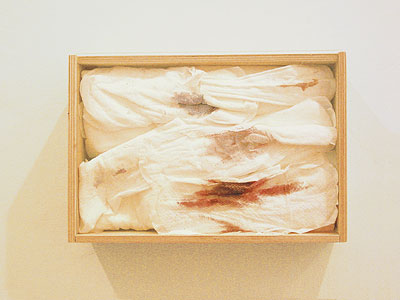
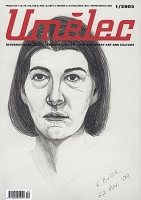























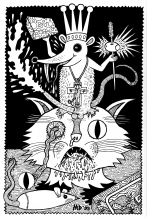
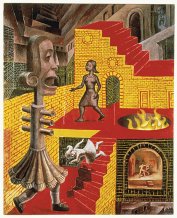
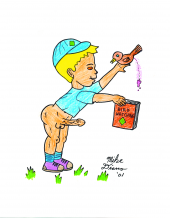


 New book by I.M.Jirous in English at our online bookshop.
New book by I.M.Jirous in English at our online bookshop.
Comments
There are currently no comments.Add new comment